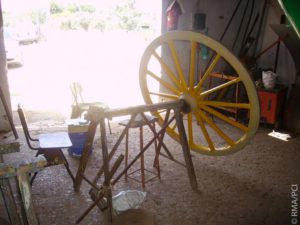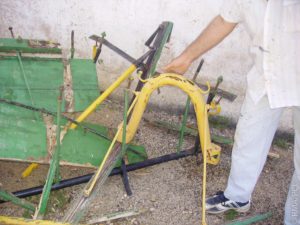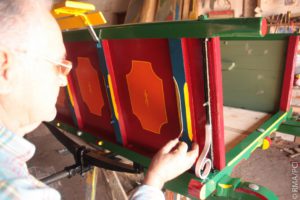Abegão
More and more in disuse nowadays, the carts were produced by the abegão. The abegão brought together the knowledge of two different activities: that of a carpenter and that of a blacksmith.
The cart was made with four different types of wood: the hub, where the axle and the wheel rim fit, was made of holm oak; the spokes of the wheels were made of Brazilian mango, while the wagon’s box was made of pine and the poles of eucalyptus; but the axles, the springs, or the brakes were made of iron, as is the rim that covers and gives resistance to the wheelset. The wheels, of metal rims made to measure, to be glued had to be previously heated in the fire, after being well hammered they fitted into the wood, and, finally, they were cooled in water. The cart begins by making the cube (the wood is washed with salt water) and takes about a month to make. Of the tools used, the roulette, a carpenter’s tools, stand out. The forge is for working the iron and the blacksmith tools, the hammer, chisel and sledgehammer.
The wagon was the most popular type of car as it shared with the man the agricultural tasks, transporting him, as well as the implements and products or goods! They were usually decorated with brightly colored paintings! The predominant colors were green, yellow and red, but each builder gave his wagons their personal stamp, allowing their builder to be easily identified.
Today, with the widespread use of the automobile, the typical Algarve animal-drawn carts are practically extinct, as is the profession of the abegão!




